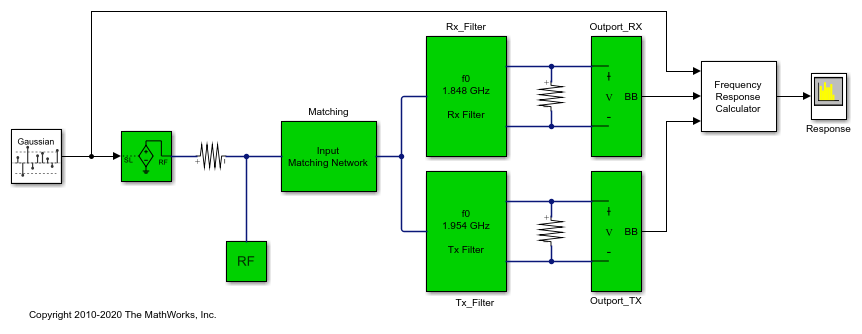Z (Impedance)
Model complex impedance
Libraries:
RF Blockset /
Circuit Envelope /
Elements
Description
The Impedance block implements the relation, vk(t) = Z(fk)*ik(t), for each simulation frequency, fk, where:
Z(fk) represents complex-valued impedance at a specified simulation frequency.
vk(t) represents the voltage across the terminals of the element at time t.
ik(t) represents the current through the element at time t.
Circuit envelope current and voltage signals comprise in-phase, Ik, and quadrature, Qk, components at each frequency, fk.
Frequency-dependent impedance typically cannot be realized as a physical network such as an RLC chain. You can, however, use the Impedance block to model nonphysical behavior, such as frequency-independent negative capacitance or negative inductance. You can also use this block to specify resonant frequency offsets in filter networks.
